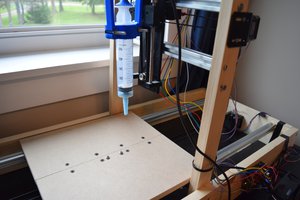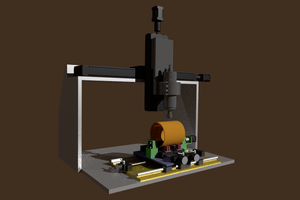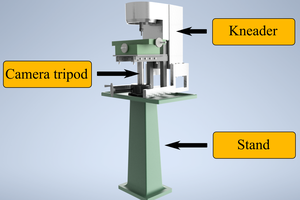In this design the rotation joint is kept very close to the racket face. This can only be achieved by using a large bearing "around" the racket rather than underneath it.
As the rotating joint and the tensioning part of the machine are almost in the same plane the resulting Moment is greatly reduced.
Since there is no base plate beneath the racket for fixed clamps, stringing necessitates the use of flying clamps.
These flying clamps can be employed either from above, which is more convenient for cross strings, or from below, which is preferable for the main strings.
String tension is electronically regulated and adjustable, ranging from very low tension (approximately 18 lbs) to very high tension (e.g 34 lbs).
Moreover, it provides the option to easily pre-stretch the strings by an additional x% if desired.
The control of the machine is through a straightforward interface featuring three buttons and an LCD screen.
This interface allows for setup adjustments, self-testing, and stringing functions.
Before use, it is required to perform a one-time calibration of the machine's load cell using a separate tension measuring device, such as a luggage scale, to ensure accurate tension readings.
 Antoine Colin
Antoine Colin
 having11
having11
 jvsalatino
jvsalatino
 willbaden
willbaden